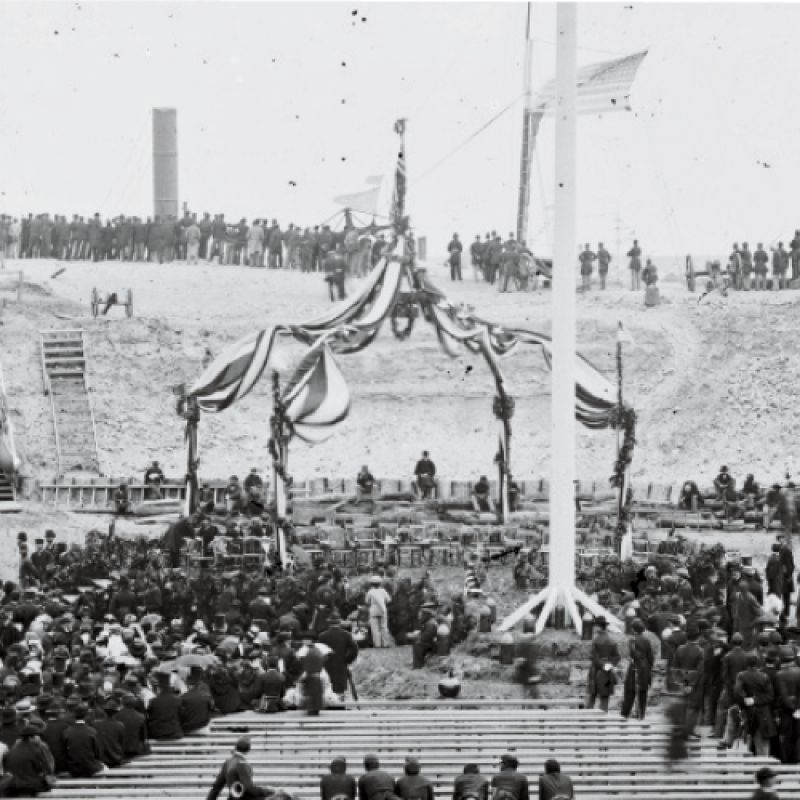
When history repeats, it’s often with irony, as in the case of April 14. In 1861, crowds thronged the Battery to look out across the harbor at Fort Sumter, where the Union Army’s Major Robert Anderson surrendered to Confederate forces, ending the battle that started the Civil War and giving the South its first big victory. Four years later to the day, after a bloody war that left more than half a million Americans dead and more than four million slaves freed, Fort Sumter was scene to another epochal ceremony. Major Robert Anderson returned to the fort and, as witnessed by abolitionists such as Henry Ward Beecher and William Lloyd Garrison, raised the same tattered American flag used to surrender it in 1861.
The war was over; the “star-spangled banner” replaced the Stars and Bars. Had Abraham Lincoln attended that ceremony it could have rewritten American history; for late in the evening of April 14, 1865, President Lincoln was shot by John Wilkes Booth in Washington, D.C. History was working overtime on those April 14ths.